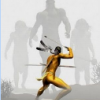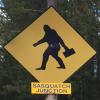You don't really read other people's posts entirely, do you? I've already provided you with facts, not assumptions.
This makes it very difficult to have a logical dialogue with you when you rant about something, I reply with more than sufficient factual information to counter your argument, and you come back ranting as if you've only read, or perhaps understood, half of the information provided to you. I'll make one last attempt by repeating the information I have previously provided. If you persist in not reading it fully, then I see no further point in dialoguing with you.
The three mummified skeletons were discovered in a cave near Walker Lake, Nevada by guano miners about the same time as the mummified skeletons from Lovelock Cave were discovered. Based on the artifacts found with them, they were from the same race of people that occupied Lovelock Cave, referred to by the Paiutes as Si-Teh-Cah. The three skeletons were placed on display at the Mark Twain Museum in Virginia City, Nevada for decades. The display consisted of a male skeleton, well over seven feet tall, a female skeleton seven feet tall, and a juvenile skeleton in the same mummified state, but under six feet tall. Keep in mind that this is two feet taller than the contemporary Paiutes. There were atlatls and atlatl darts displayed with them, as well as other artifacts including woven partially decayed woven baskets, etc. They had decayed clothing consisting of coarsely woven plant fiber. There was still hair attached to the remaining skin, not just on their heads, but also on their arms and shoulders, where it was about two inches in length. The hair was red, as it was with the Lovelock Cave remains.
I personally viewed the remains several times between 1969 and 1978. In 1991, I visited the Museum and they were gone and I assumed that they had been repatriated by the Paiutes. In 2011 I decided to try and track them down. I visited the Museum in Virginia City and the Nevada Historical Society adjacent the the UNR campus. I finally learned that the remains were not repatriated by the Paiutes (the Paiutes are adamant that the remains are from the race of cannibals with whom they warred and eventually wiped out). The big revelation was that it was BLM who took the skeletons.
I do not believe that the remains are bigfoot remains, but they do appear to be from the same race of people whose remains are reported from different areas the country. These people continued to use atlatls long after all other tribes were using bows, which makes sense because their longer arms would have provided greater power and range with atlatls than the bows used by shorter peoples. Also a large bow, sized to them, crafted from the same materials used by other tribes would not have withstood the force of a longer and stronger pull. Si-Teh-Cah, by the way, means stick thrower people. This is consistent with the use of atlatls.
So, in a nutshell.
Remains of three large individuals from an uncatalogued race of people two feet taller, on the average (males between seven and eight feet), than the contemporary natives were on display.
The government got hold of them.
They are no longer available to the public.
This is exactly what Thomas Powell, the first Director or the Smithsonian's Bureau of Ethnology, was trying to suppress. The "unwise", as he called it, use of the anthropological information acquired by researchers at the time included links to what Powell referred to as "tribes of antiquity" from the Old World. If this information became widely accepted it would have threatened Manifest Destiny. He was worried that the public may begin to view some of the native peoples as descendants of European tribes mentioned in the Old Testament and that this would bolster the theological assertions of the people settling Utah at the time, with whom the government was at odds.



